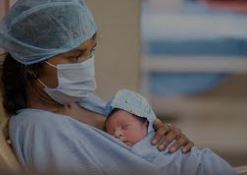Lived experiences of nurses and midwives about pregnancy and childbirth care among tribal women at secondary level health care facilities of Madhya Pradesh, India.
Abstract
Introduction: Tribal communities are distinct across the India and state of Madhya Pradesh. Thereare few shreds of evidence that addressed the inadequacy of health status in the tribal population ascompared to the non-tribal population. Pregnancy and childbirth care is compounded by issues likepoor nutrition and the education level of girls. Suboptimal access to maternal health services due totraditional beliefs, violence against women and substance abuse are significant.
Objectives: Thisstudy is focused to explore and understand the experiences of nurses in maternity care catering tothe tribal population.
Material & Methods: A phenomenology study was conducted. Twocommunity health centres from a tribal district were selected. Six in-depth interviews were carriedout to probe the experiences of nurses, data were analyzed using ATLAS.ti 8 software.
Results:Major themes that are reflected by nurses are difficult transportation, the high volume of normalvaginal deliveries, initial experiences of conduction of normal and assisted delivery, social andprofessional isolation and traditional tribal practices of pregnancy and childbirth.
Conclusion:Understanding the nurses’ experiences are sufficient evidence to render culturally oriented maternitycare and reform the tribal public health system
Downloads
References
2. Office of the Registrar General & Census Commissioner, India, Ministry of Home Affairs. Scheduled Castes & Scheduled Tribes Population. Available at: https://censusindia.gov.in/census_data_2001/india_at_glance/scst.aspx. Accessed on 1st March 2021.
3. Department of Tribal Welfare, MP. Home page. The population of Tribal in MP. Available at: https://www.tribal.mp.gov.in/CMS/?page=3NKnYNUNHl2dEIb3Hf8/Lg==. Accessed on 1st March 2021.
4. Scheduled Tribe Population - Census 2011. Available at: https://www.census2011.co.in/scheduled-tribes.php. Accessed on 1st March 2021.
5. Office of the Registrar General & Census Commissioner, India, Ministry of Home Affairs. Madhya Pradesh, Data highlight of Scheduled Tribe. Available at: https://censusindia.gov.in/Tables_Published/SCST/dh_st_madhya_pradesh.pdf. Accessed on 1st March 2021.
6. Ministry of Health & Family Welfare and the Ministry of Tribal Affairs. Report of the expert committee on tribal health, tribal health in India: Bridging the gap and roadmap for the future-Policy brief; [Internet]. 2018. Available at: http://nhsrcindia.org/news/report-expert-committee-tribal-health. Accessed on 27th Feb 2021.
7. Jose JA, Sarkar S, Kumar S G, Kar SS. Utilization of maternal health-care services by tribal women in Kerala. J Nat Sc Biol Med [serial online] 2014 [cited 2021 Feb 28];5:144-7.
8. Begum S, Sebastian A, Kulkarni R, Singh S, Donta B. Traditional practices during pregnancy and childbirth among tribal women from Maharashtra: a review. Int J Community Med Public Health Int J Community Med Public Health. 2017 Apr;4(4):882-885. DOI: 10.18203/2394-6040.ijcmph2017130.1
9. Director General of health services. Ministry of Health and Family Welfare, Govt of India. Indian Public Health Standards (IPHS)Guidelines for Community Health Centres, Revised 2012. Available at: https://nhm.gov.in/images/pdf/guidelines/iphs/iphs-revised-guidlines-2012/community-health-centres.pdf. Accessed on 28th Feb 2021.
10. Ministry of Health and Family Welfare, Govt of India. Statistics Division. Rural Health Statistics 2014-15. Available at: https://wcd.nic.in/acts/rural-health-statistics-2014-15-ministry-health-and-family-welfare-statistics-division. Accessed on 28th February 2021.
11. World health organization. Nursing and midwifery. Key facts. Avaialble at: https://www.who.int/news-room/fact-sheets/detail/nursing-and-midwifery. Accessed on 28th Feb 2021.
12. Saikia, D. Nursing Shortages in the Rural Public Health Sector of India. Journal of Population and Social Studies [JPSS], 2018; 26(2), 101 - 118.
13. Open government data (OGD) Platform India. HMIS sub district level item-wise monthly report of Madhya Pradesh/Item-wise report for Betul of Madhya Pradesh for April-2019-20. Available at: https://data.gov.in/resources/item-wise-report-betul-madhya-pradesh-April-2019-20. Accessed on 28th Feb 2021.
14. Shenton AK. Strategies for ensuring trustworthiness in qualitative research projects. Education for Information. 2004;22(2):63-75. doi: https://doi.org/10.3233/EFI-2004-22201.
15. Jose JA, Sarkar S, Kar SS, Kumar SG. Experiences of junior public health nurses in delivery of maternal healthcare services to tribal women in Kerala. J Family Med Prim Care. 2013 Jan;2(1):60-3. doi: 10.4103/2249-4863.109948. PMID: 24479046; PMCID: PMC3894011.
16. Mavalankar D. Doctors for Tribal Areas: Issues and Solutions. Indian J Community Med. 2016;41(3):172-176. doi:10.4103/0970-0218.183587
17. MacKinnon K. Learning maternity: the experiences of rural nurses. Can J Nurs Res. 2010 Mar;42(1):38-55. PMID: 20420091. doi: https://doi.org/10.2967/jnumed.114.148981
18. Amit Sengupta. Maternal health in underserved tribal India. Sexual and Reproductive Health Matters, 2019;27:1, 304-306, DOI: 10.1080/26410397.2019.1581534.
19. Saxena M, Srivastava A, Dwivedi P, Bhattacharyya S : Is quality of care during childbirth consistent from admission to discharge? A qualitative study of delivery care in Uttar Pradesh, India. PLoS ONE .2018 13(9): e0204607. https://doi.org/ 10.1371/journal.pone.0204607
20. Contractor, S.Q., Das, A., Dasgupta, J. et al. Beyond the template: the needs of tribal women and their experiences with maternity services in Odisha, India. Int J Equity Health 17, 134 (2018). https://doi.org/10.1186/s12939-018-0850-9

Copyright (c) 2022 Author (s). Published by Siddharth Health Research and Social Welfare Society

This work is licensed under a Creative Commons Attribution 4.0 International License.


 OAI - Open Archives Initiative
OAI - Open Archives Initiative


